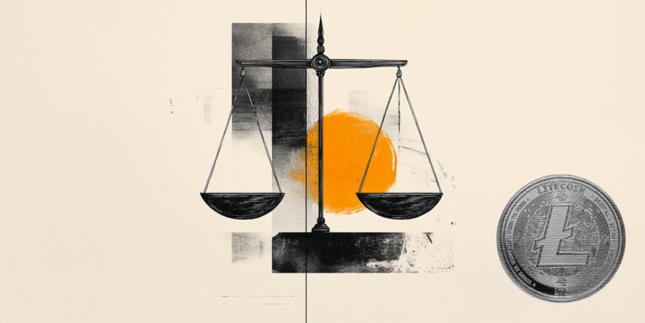
- USD/CHF drops to a fresh multi-year trough as the USD selling remains unabated.
- Fed independence fears and rate cut bets drag the USD to over a three-year low.
- The Israel-Iran truce caps the safe-haven CHF and helps limit losses for the major.
The USD/CHF pair remains depressed for the fourth consecutive day and touches a fresh low since September 2011, around the 0.8025 region during the Asian session on Thursday.
The US Dollar (USD) selling bias remains unabated amid concerns about the future independence of the Federal Reserve (Fed) independence, which, in turn, is seen as a key factor weighing on the USD/CHF pair. US President Donald Trump escalated his criticism of Fed Chair Jerome Powell for not cutting interest rates and called him terrible. Trump also floated the idea of firing Powell and said that he was considering several candidates as contenders for the top Fed job.
Meanwhile, traders have been betting that the Fed will lower rates by at least 50 basis points before the end of the year and are also pricing in a roughly 25% chance of a rate reduction in July. In contrast, the Swiss National Bank (SNB) signaled that it does not plan more interest rate cuts, disappointing investors expecting that rates might return to negative territory this year. This is seen as another factor that contributes to the weaker tone surrounding the USD/CHF pair.
However, the latest optimism over a ceasefire between Israel and Iran continues to underpin the global risk sentiment, which, in turn, is seen denting demand for traditional safe-haven assets. This holds back traders from placing aggressive bullish bets around the Swiss Franc (CHF) and helps limit losses for the USD/CHF pair. Traders now look to the US macro data – the final Q1 GDP, Weekly Initial Jobless Claims, Durable Goods Orders, and Pending Home Sales.
Apart from this, speeches from influential FOMC members would drive the USD and provide some impetus to the USD/CHF pair. The focus will then shift to the release of the US Personal Consumption Expenditure (PCE) Price Index on Friday. The crucial US inflation data would provide cues about the Fed’s future rate-cut path, which, in turn, will play a key role in determining the next leg of a directional move for the Greenback and the currency pair.
Swiss Franc FAQs
The Swiss Franc (CHF) is Switzerland’s official currency. It is among the top ten most traded currencies globally, reaching volumes that well exceed the size of the Swiss economy. Its value is determined by the broad market sentiment, the country’s economic health or action taken by the Swiss National Bank (SNB), among other factors. Between 2011 and 2015, the Swiss Franc was pegged to the Euro (EUR). The peg was abruptly removed, resulting in a more than 20% increase in the Franc’s value, causing a turmoil in markets. Even though the peg isn’t in force anymore, CHF fortunes tend to be highly correlated with the Euro ones due to the high dependency of the Swiss economy on the neighboring Eurozone.
The Swiss Franc (CHF) is considered a safe-haven asset, or a currency that investors tend to buy in times of market stress. This is due to the perceived status of Switzerland in the world: a stable economy, a strong export sector, big central bank reserves or a longstanding political stance towards neutrality in global conflicts make the country’s currency a good choice for investors fleeing from risks. Turbulent times are likely to strengthen CHF value against other currencies that are seen as more risky to invest in.
The Swiss National Bank (SNB) meets four times a year – once every quarter, less than other major central banks – to decide on monetary policy. The bank aims for an annual inflation rate of less than 2%. When inflation is above target or forecasted to be above target in the foreseeable future, the bank will attempt to tame price growth by raising its policy rate. Higher interest rates are generally positive for the Swiss Franc (CHF) as they lead to higher yields, making the country a more attractive place for investors. On the contrary, lower interest rates tend to weaken CHF.
Macroeconomic data releases in Switzerland are key to assessing the state of the economy and can impact the Swiss Franc’s (CHF) valuation. The Swiss economy is broadly stable, but any sudden change in economic growth, inflation, current account or the central bank’s currency reserves have the potential to trigger moves in CHF. Generally, high economic growth, low unemployment and high confidence are good for CHF. Conversely, if economic data points to weakening momentum, CHF is likely to depreciate.
As a small and open economy, Switzerland is heavily dependent on the health of the neighboring Eurozone economies. The broader European Union is Switzerland’s main economic partner and a key political ally, so macroeconomic and monetary policy stability in the Eurozone is essential for Switzerland and, thus, for the Swiss Franc (CHF). With such dependency, some models suggest that the correlation between the fortunes of the Euro (EUR) and the CHF is more than 90%, or close to perfect.
Information on these pages contains forward-looking statements that involve risks and uncertainties. Markets and instruments profiled on this page are for informational purposes only and should not in any way come across as a recommendation to buy or sell in these assets. You should do your own thorough research before making any investment decisions. FXStreet does not in any way guarantee that this information is free from mistakes, errors, or material misstatements. It also does not guarantee that this information is of a timely nature. Investing in Open Markets involves a great deal of risk, including the loss of all or a portion of your investment, as well as emotional distress. All risks, losses and costs associated with investing, including total loss of principal, are your responsibility. The views and opinions expressed in this article are those of the authors and do not necessarily reflect the official policy or position of FXStreet nor its advertisers. The author will not be held responsible for information that is found at the end of links posted on this page.
If not otherwise explicitly mentioned in the body of the article, at the time of writing, the author has no position in any stock mentioned in this article and no business relationship with any company mentioned. The author has not received compensation for writing this article, other than from FXStreet.
FXStreet and the author do not provide personalized recommendations. The author makes no representations as to the accuracy, completeness, or suitability of this information. FXStreet and the author will not be liable for any errors, omissions or any losses, injuries or damages arising from this information and its display or use. Errors and omissions excepted.
The author and FXStreet are not registered investment advisors and nothing in this article is intended to be investment advice.
Editors’ Picks

EUR/USD attracts some buyers to near 1.1700 ahead of US GDP release
The EUR/USD pair extends its upside to near 1.1690 during the Asian trading hours on Thursday. The US Dollar weakens against the Euro as investors are concerned about the future independence of the US Federal Reserve. The final US Q1 Gross Domestic Product Growth Rate will be in the spotlight later on Thursday.

Litecoin holders’ profit-taking activity reaches three-month high
Litecoin is stabilizing at around $85 at the time of writing on Thursday, having recovered 6% so far this week. On-chain data indicate early bearish signals for LTC as holders’ profit-taking activity reaches a three-month high and dormant wallets’ activity increases, signaling growing selling pressure.

Could Iran block the Strait of Hormuz? Why Oil is on edge after US strikes
As the Israel-Iran conflict reaches new heights, an old threat is coming back to haunt the markets: that of the closure of the Strait of Hormuz. This narrow arm of the sea in the Persian Gulf, wedged between Iran to the north and the United Arab Emirates and Oman to the south, is much more than a simple sea passage.

The Best brokers to trade EUR/USD
SPONSORED Discover the top brokers for trading EUR/USD in 2025. Our list features brokers with competitive spreads, fast execution, and powerful platforms. Whether you’re a beginner or an expert, find the right partner to navigate the dynamic Forex market.








